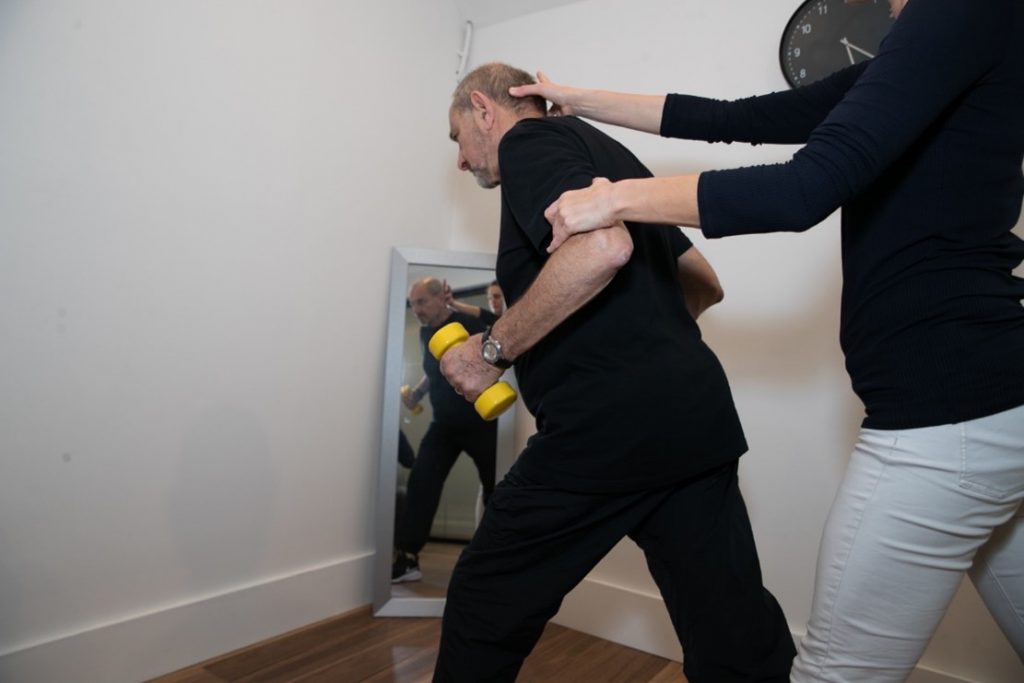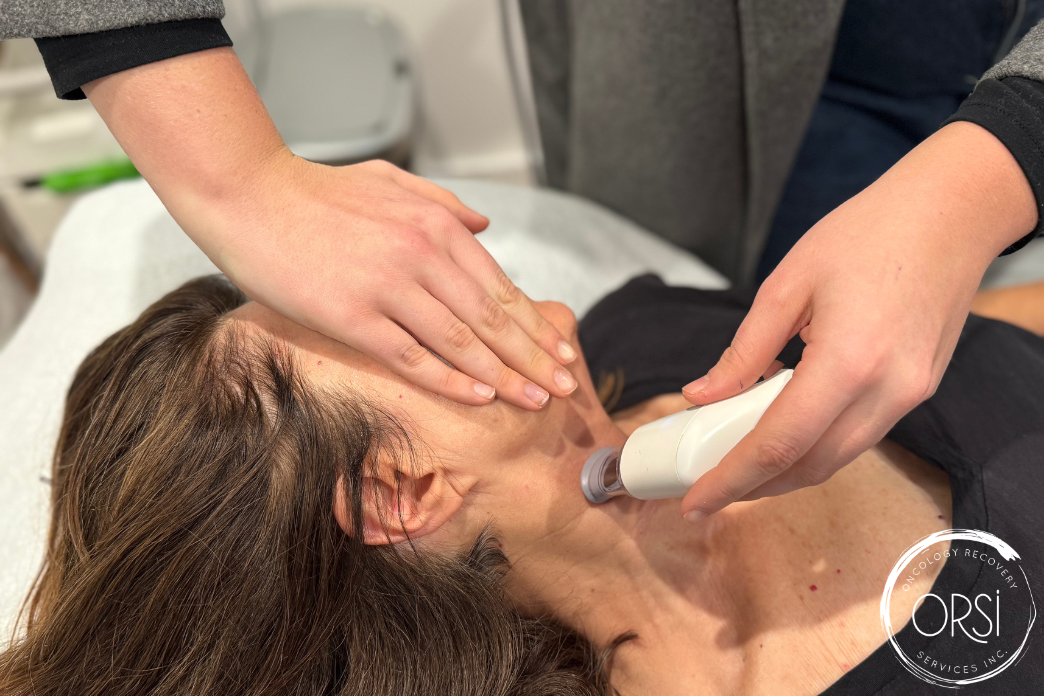The benefits of exercise for cancer patients are wide ranging and well documented. Not only can exercise improve treatment outcomes but help to manage common side-effects of cancer treatment.
Common experiences and side effects of cancer treatment:
- Fatigue
- Lymphoedema
- Functional limitations i.e.: unable to lift arm above head
- Postural changes
- Muscle weakness
- Overall deconditioning
- Excess weight gain or loss
- Pain
- Peripheral neuropathy (loss of sensation)
- Reduced bone mass
- Body composition changes
- Nausea and bowel changes
- Loss of cardiorespiratory function/fitness
- Anxiety and depression
Some of these side-effects can be extremely debilitating, with consequences such as difficulties completing activities of daily living, reduction in normal leisure activities and an increase in sedentary behaviour. The above symptoms or conditions can be experienced both acutely during treatment but also in the months to years that follow. Chronic or long-term side-effects can lead to an overall reduced quality of life. Without intervention these negative lifestyle changes can lead to an increased risk of chronic disease, poor mental health and further disability.
Our team at Oncology Recovery Services Inc. works closely with the patient’s established network of health professionals such as their oncologists, GPs or surgeons. Together we guide our patients along the road of recovery with an individually tailored treatment plan that includes a safe exercise program.
For this blog, our physiotherapist Orsi Kokai teamed up with Ashleigh Mead, an accredited exercise physiologist, to examine the role of allied health professionals, in particular the benefits of exercise and physiotherapy, in optimising health outcomes for cancer patients.
How can physiotherapy help people recovering from cancer?
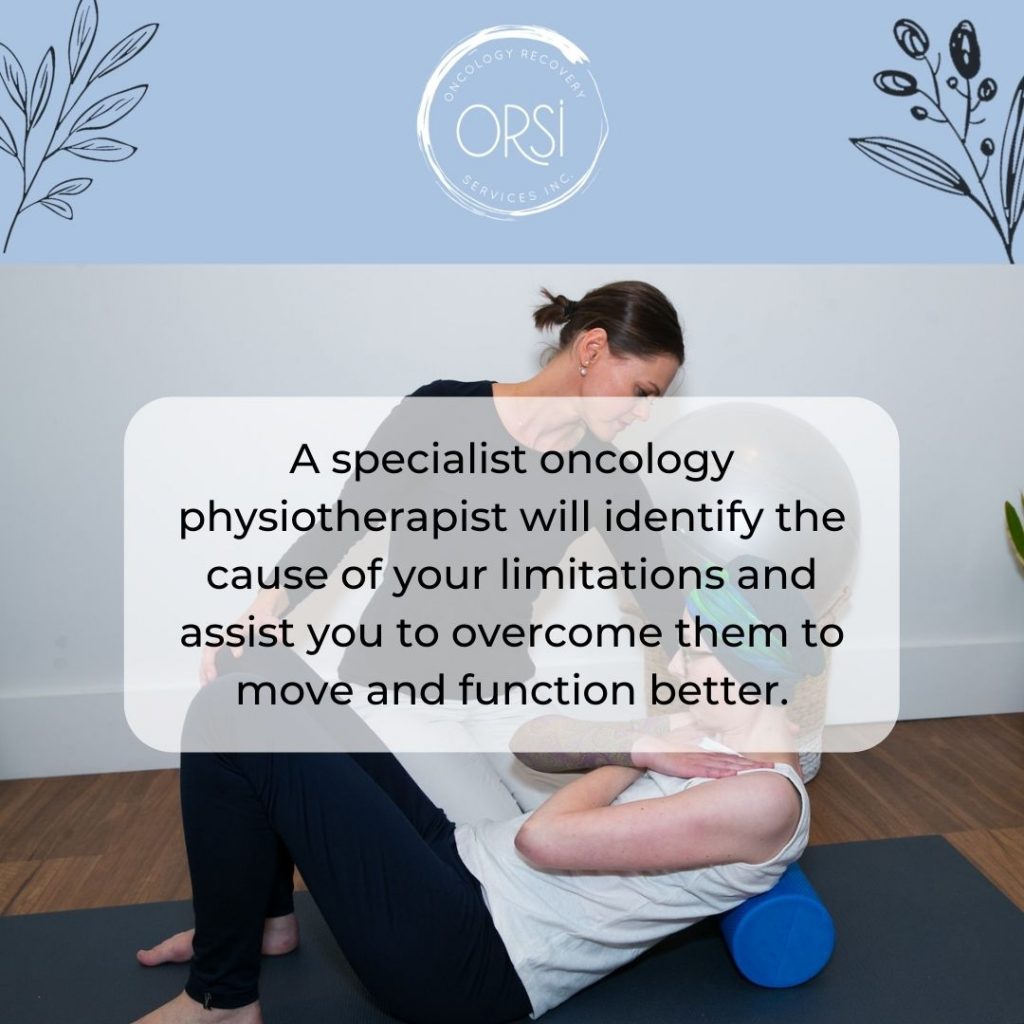
People experiencing pain or physical limitations are usually less likely to move. A specialist oncology physiotherapist assists with the detection and management of physical side-effects of cancer treatment. One of the most common side effects of cancer treatment, especially in the breast cancer population, is lymphoedema. Lymphoedema is a chronic condition characterised by excess swelling of a particular body part that experienced disruption or damage to the lymphatic system. In breast cancer patients the damage to the lymphatic system occurs through surgical removal of lymph nodes and or radiation therapy. Patients who have undergone removal of lymph nodes and radiation therapy are therefore at a higher risk of developing this secondary condition. A specialist physiotherapist can assess, diagnose, and treat lymphoedema, as well as advise on self-management strategies to prevent the possible progression of the disease.
Further to detecting, monitoring and managing lymphoedema, a physiotherapist can apply specific hands-on techniques to reduce scar tissue and muscle tightness, decrease radiation damage and enhance movement in the affected areas. Furthermore, the prescription of appropriate exercises by an oncology physiotherapist can reduce physical limitations, facilitate confidence in movement, improve strength, and positively impact on posture and the activities of daily living. A close collaboration with an exercise physiologist, can ensure the gradual and safe progression of an exercise regime that is individually tailored to the recovering patient’s needs. While physiotherapists help you to move by minimising physical limitations, exercise physiologist take your movement regime to the next level.
How can an exercise physiologist help people recovering from cancer?
As per the current position stand referenced above, exercise physiologists play an important role in assisting with the safe delivery of exercise during and after cancer treatment.
An exercise physiologist will:
- Perform an assessment to determine your current capacity and readiness for exercise
- Consider side-effects, other health conditions/co-morbidities
- Help set appropriate health-based goals
- Prescribe a safe, appropriate, and individualised exercise session which considers time, type, frequency, and intensity of activity.
- Help you implement a holistic exercise program that includes mobility exercises, resistance exercises, weight-bearing movements, cardiorespiratory training, balance training and specific rehabilitation exercises
Exercise during and after cancer treatment: what does the science say?
There is extensive scientific research on the benefits of exercise during and after cancer treatment.
In 2019 Exercise and Sports Science Australia (ESSA) published a position stand entitled “The Exercise and Sports Science Australia position statement: Exercise medicine in cancer management.”
This position statement looked at the collection of resources/studies and evidence on this topic to reach a most accurate and current best practice recommendation.
The ESSA position stand refers to a study by Fuller J.T., Hartland M.C., Maloney L.T. et al. entitled “Therapeutic effects of aerobic and resistance exercises for cancer survivors: a systematic review of meta-analyses of clinical trials” which reported that “140 meta-analyses have been published to date, with the majority (75%) showing statistically significant and clinically relevant benefit through exercise on a range of treatment-related side effects, physical, functional, and psychosocial outcomes.”
There is now evidence for the benefit of exercise on specific side effects including: lymphoedema, sleep quality, peripheral neuropathy, sarcopenia (muscle loss), bone health and metabolic syndrome.
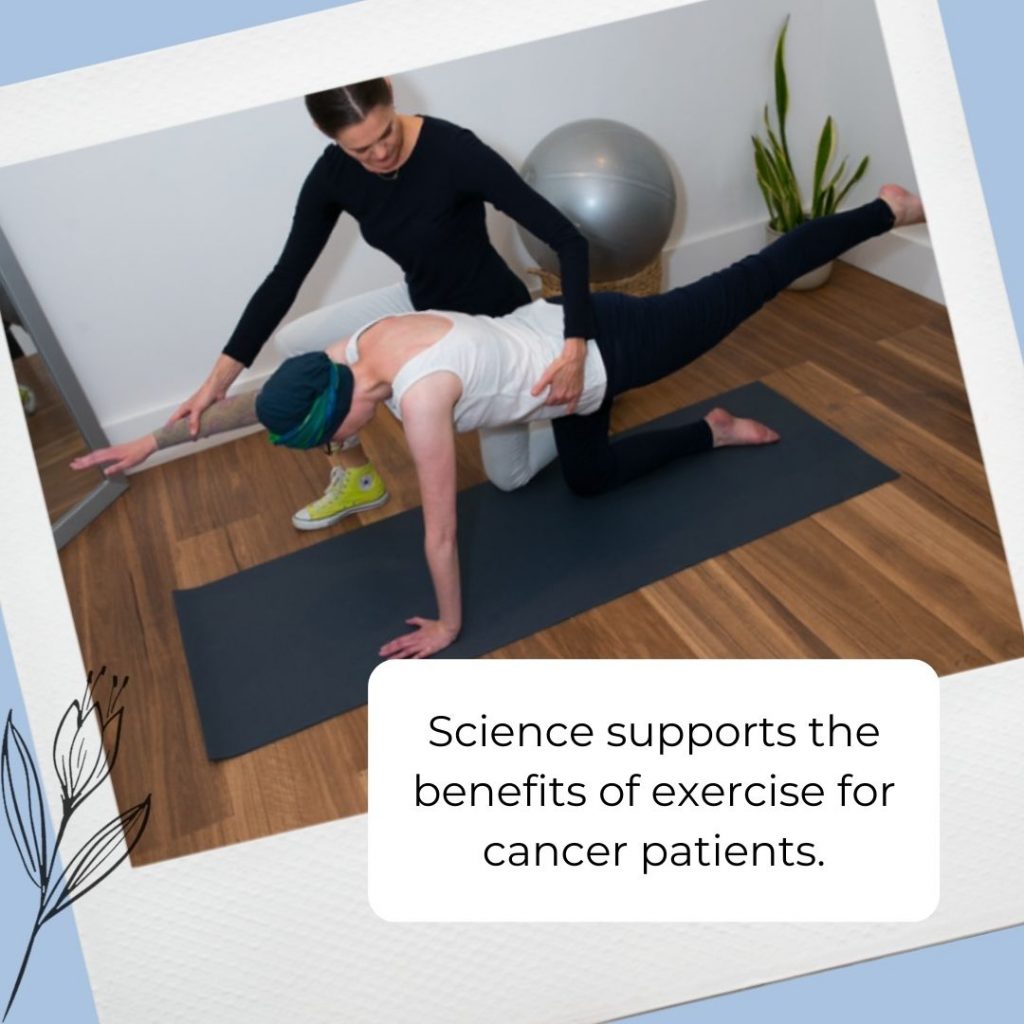
As well as helping in the management of side-effects, there is overwhelming existing evidence and guidelines (Australian Physical Activity Guidelines) supporting the benefits of exercise for improved physical and mental health.
In summary, the evidence is in favour of exercise prescription for cancer patients, however, the current guidelines emphasise the importance of a gradual, individualised approach and recommend the support/guidance of exercise health professionals.
Further Reading/Resources
- The Exercise and Sports Science Australia position statement: Exercise medicine in cancer management – 2019
- Australian Association for Exercise and Sport Science position stand: Optimising cancer outcomes through exercise – 2009
- The Effect of Exercise for the Prevention and Treatment of Cancer-related Lymphedema: A Systematic Review with Meta-analysis-2022
Written by Ashleigh Mead and Orsi Kokai
Ashleigh is an Exercise Physiologist with experience in providing gym-based, home and outdoor exercise sessions for individuals currently receiving cancer treatment and those who are in recovery post-treatment.
Longevity Exercise Physiology 1300 964 002; email: [email protected]
